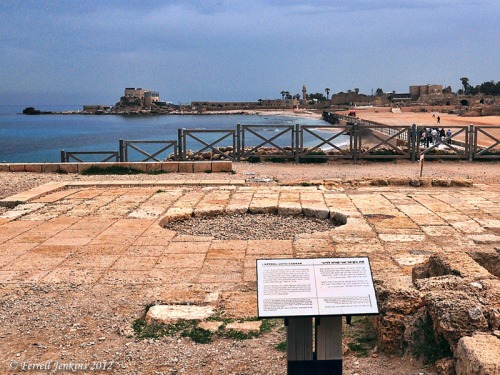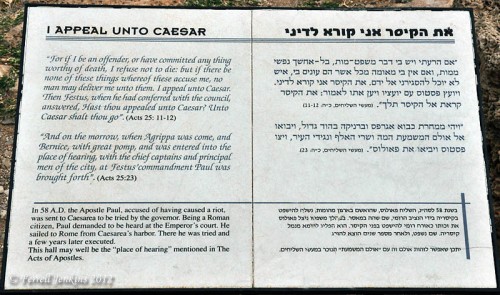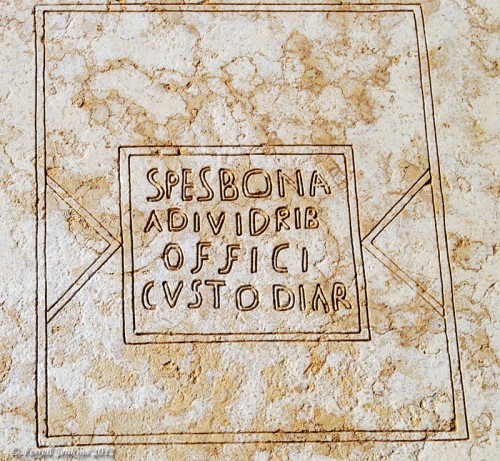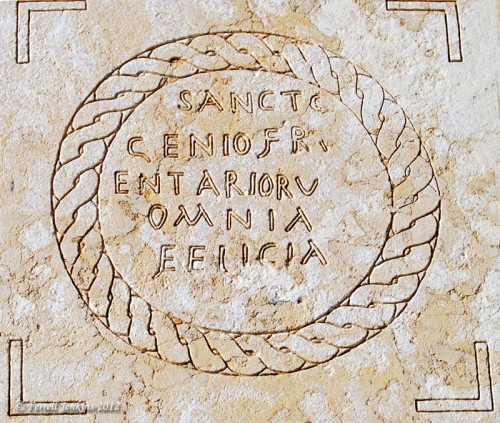'via Blog this'
We have mentioned previously that the events of Acts 24-26 took place at Caesarea. The material we have presented may be used with either chapter.
Luke says that Agrippa and Bernice came amid great pomp into the audience hall.
So on the next day Agrippa and Bernice came with great pomp, and they entered the audience hall with the military tribunes and the prominent men of the city. Then, at the command of Festus, Paul was brought in. (Acts 25:23 ESV)
Excavations at Caesarea in 1997 caused Yosef Porat, of the Israel Antiquities Authority, to think that the auditorium or audience hall mentioned here has been discovered. This photo shows the general area within the Herodian Palace (cf. John McRay, Paul: His Life and Teaching).
The sign visible in the foreground is found only in my 2011 photographs. Signs are moved because they become incorrect, worn, or in the way of continued restoration. Here is the sign.
Paul may have appeared before Felix, Festus, and Agrippa at this place. I often tell my tour groups, “If it didn’t happen right here (pointing down), it happened right here (motioning with arms extended, meaning nearby).”
When Paul first arrived at Caesarea, Felix said,
… “I will give you a hearing when your accusers arrive.” And he commanded him to be guarded in Herod’s praetorium. (Acts 23:35 ESV)
Two prison inscriptions were found in the same area, leaving the scholars working there to conclude that this was indeed the Praetorium of the Palace.
The first reads, “The fraternity of the Frumentarii. Happiness for all.”
The inscription reads, “O, good hope, I came to this office. I will be secure.” An accompanying sign says,
“This inscription indicates that a Latin-speaking guard was in charge of the security of the building, and of the safety of the governor.”
The second inscription reads, “The fraternity of the Frumentarii. Happiness for all.” The Frumentarius was an official in charge of police duties and prisoners. The accompanying sign says that Paul was the most famous prisoner held there.
As a Roman citizen, Paul was allowed his right to appeal to Caesar (Acts 25:11-12). We all know that the wheels of justice often move slowly.





No comments:
Post a Comment